Research
Mission Statement
To develop dynamic RF apertures that sense and adapt to their electromagnetic environment and are structurally integrated with future flexible, transparent, and textile-based platforms, and to develop physics-based methods to understand the capabilities and limitations of next-generation antennas.
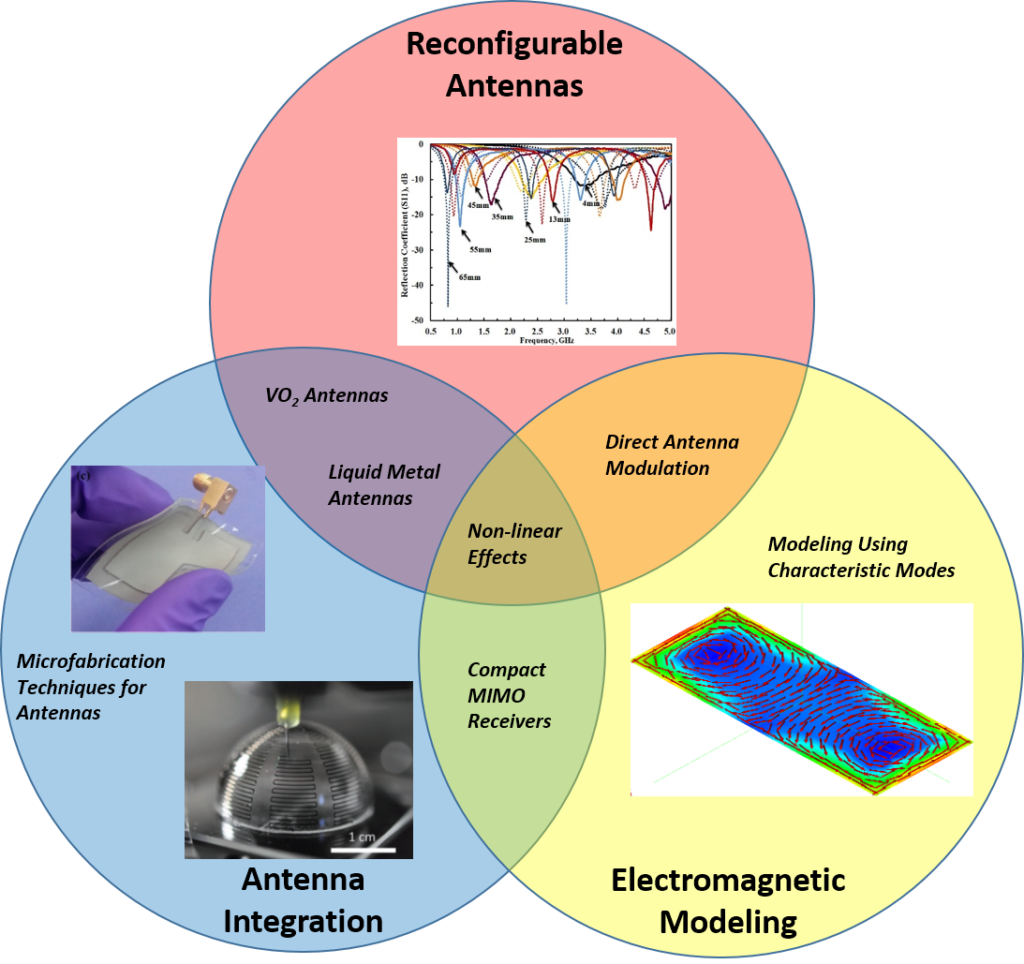
Conductors with a melting point below room temperature enable a unique design space for RF devices. Physically reshaping the current paths enables a wider range of electrical properties (operating frequency, polarization, pattern, etc.) than can be achieved using conventional lumped element-based reconfiguration.
In this space, we are exploring novel actuation mechanisms for these devices and new concepts for reconfigurable antennas, arrays, and periodic structures enabled by liquid metals. Networks of microchannels within structural materials can support embedded arrays and with a highly agile RF response.
Antennas and sensors based on this technology can be implanted in flexible materials for soft electronics applications.
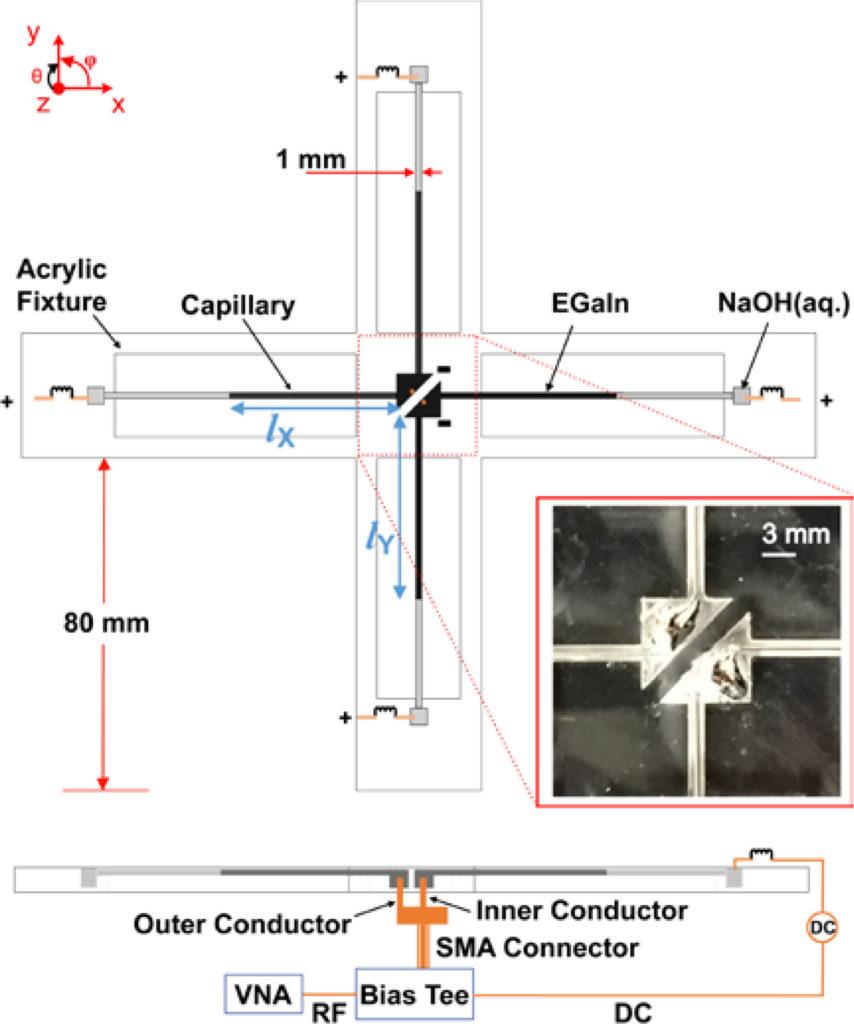
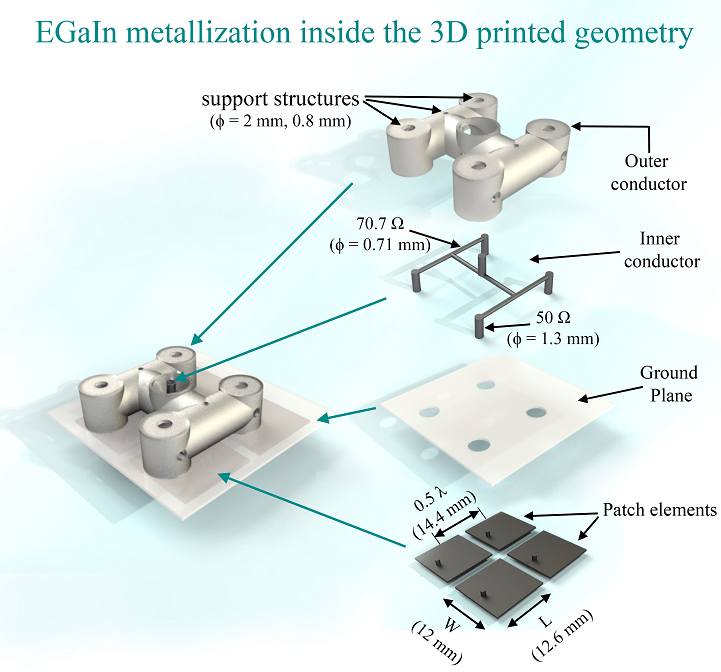
Conductors with a melting point below room temperature enable a unique design space for RF devices. Physically reshaping the current paths enables a wider range of electrical properties (operating frequency, polarization, pattern, etc.) than can be achieved using conventional lumped element-based reconfiguration.
Antennas that are small relative to a wavelength are inherently narrowband due to well-known radiation physics. Because of their narrow bandwidth, small antennas are unable to transmit broadband signal or equivalently, very short time pulses. However, by manipulating the energy stored on the antenna using switches, the antenna can be charged or discharged very quickly, allowing for rapid symbol transitions and extremely broadband radiation that cannot be achieved using conventional passive antennas.
In this work, we are measuring the communication performance of these direct antenna modulation (DAM) transmitters and seeking to understand their fundamental and practical limitations.
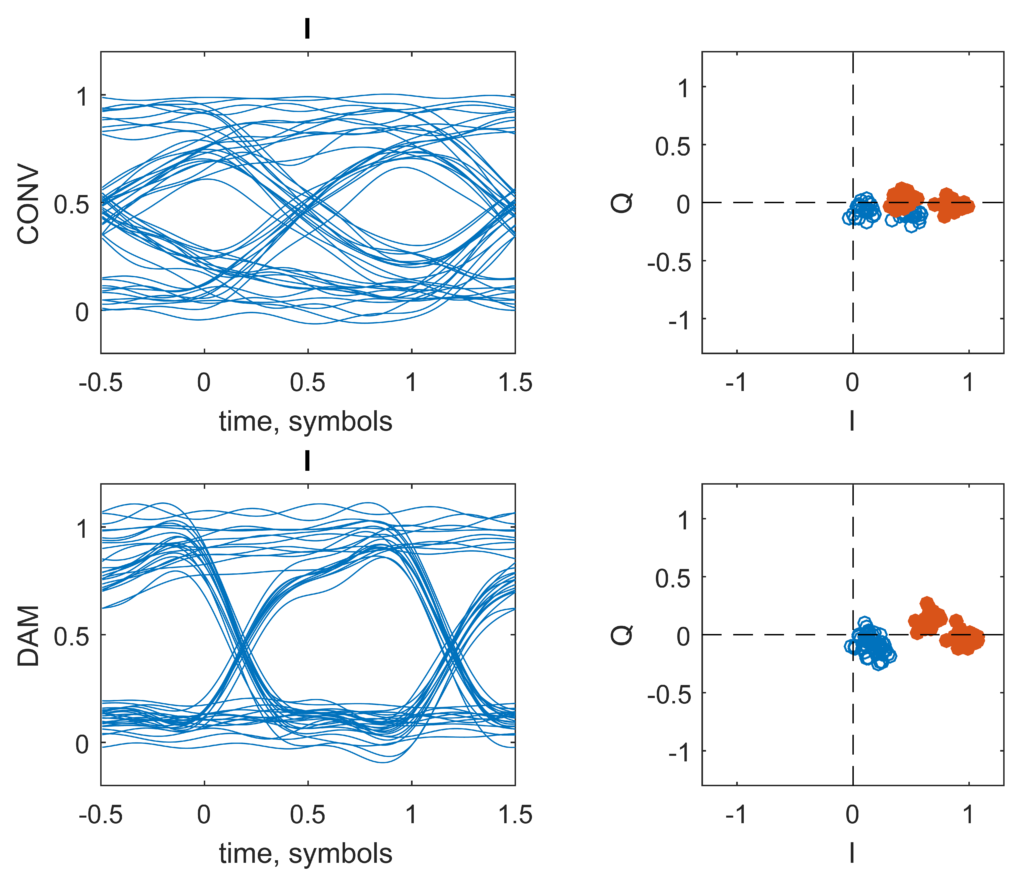
Multi-input, multi-output (MIMO) antenna systems produce dramatic gains in the capacity of a communications link and will be a key technology in 5G wireless networks. However, MIMO systems require many separate, uncoupled antennas, which are difficult to realize in a small form factors or when the number of independent feeds become very large as planned for massive MIMO system.
In our work on this topic, we seek to study the fundamental limits of MIMO systems by combining electromagnetic field theory and information theory.
For example, how much information can be observed by sampling the currents on an antenna structure? How can one design an antenna structure to maximize MIMO capacity while including effects such as mutual coupling between ports?
We have also developed several electromagnetic design and optimization tools for planar MIMO antennas.
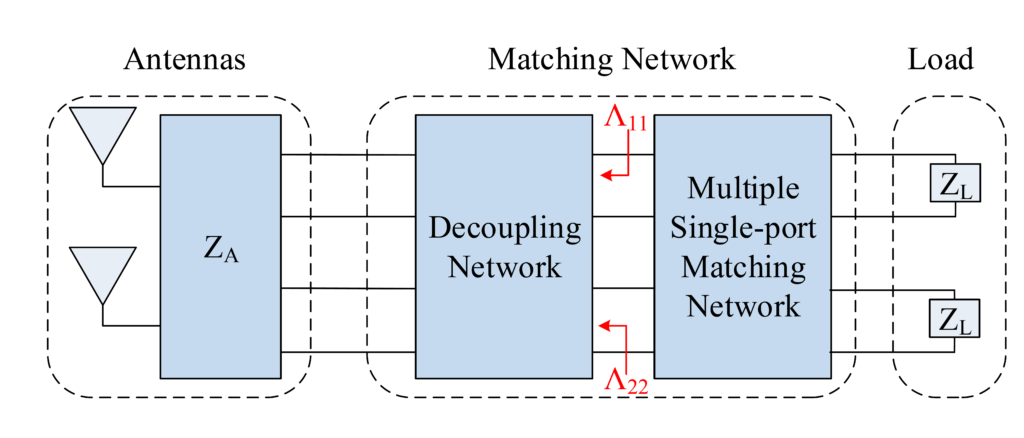
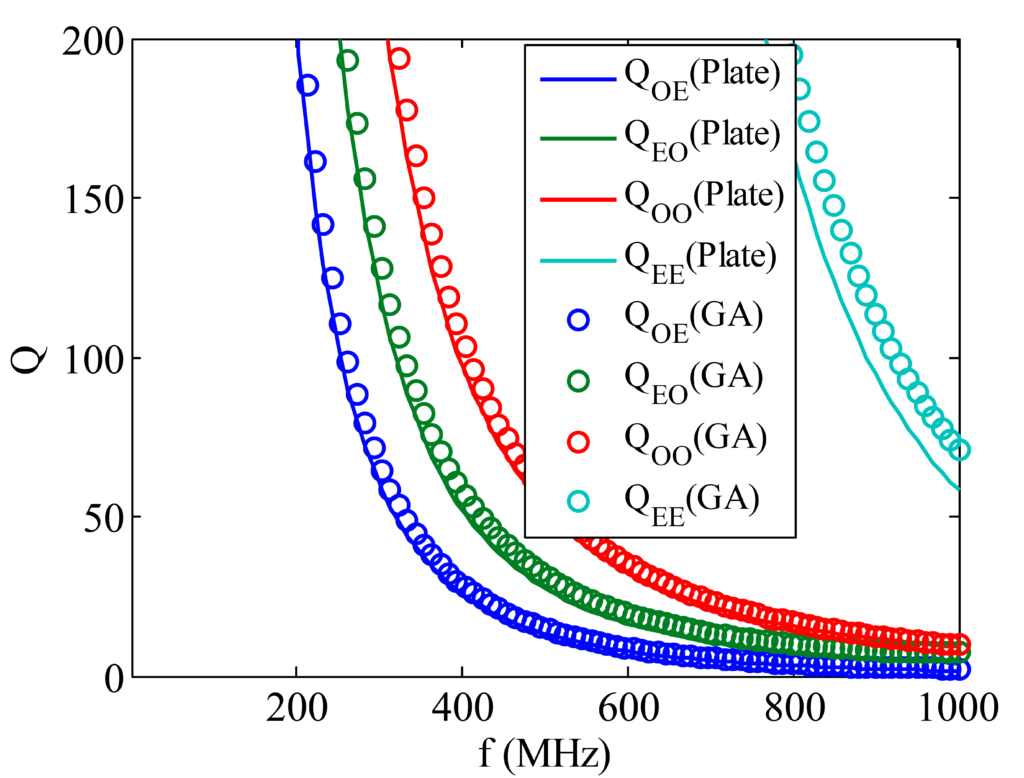
Many abstractions can be leveraged to model an antenna as a lumped element circuit. Typically, different types of antennas use different models to explain their behavior.
However, the response of any antenna can be decomposed into the response of several “characteristic modes” or eigencurrents that combine to produce the antennas response. The individual characteristic modes often can be fit to simple analytical circuit forms, and thus a complex antenna response can be generated from a combination of low-complexity characteristic modes.
We use this concept to develop efficient modeling tools for antennas that can quickly compute an antenna’s frequency response and accelerate design of MIMO antennas.
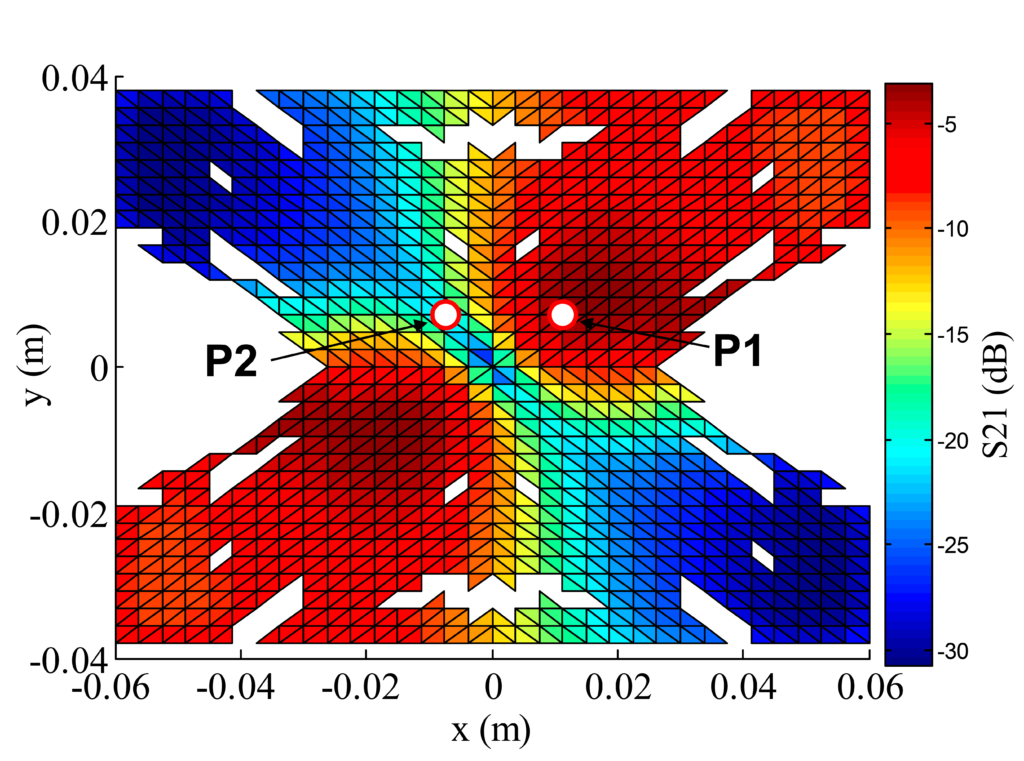
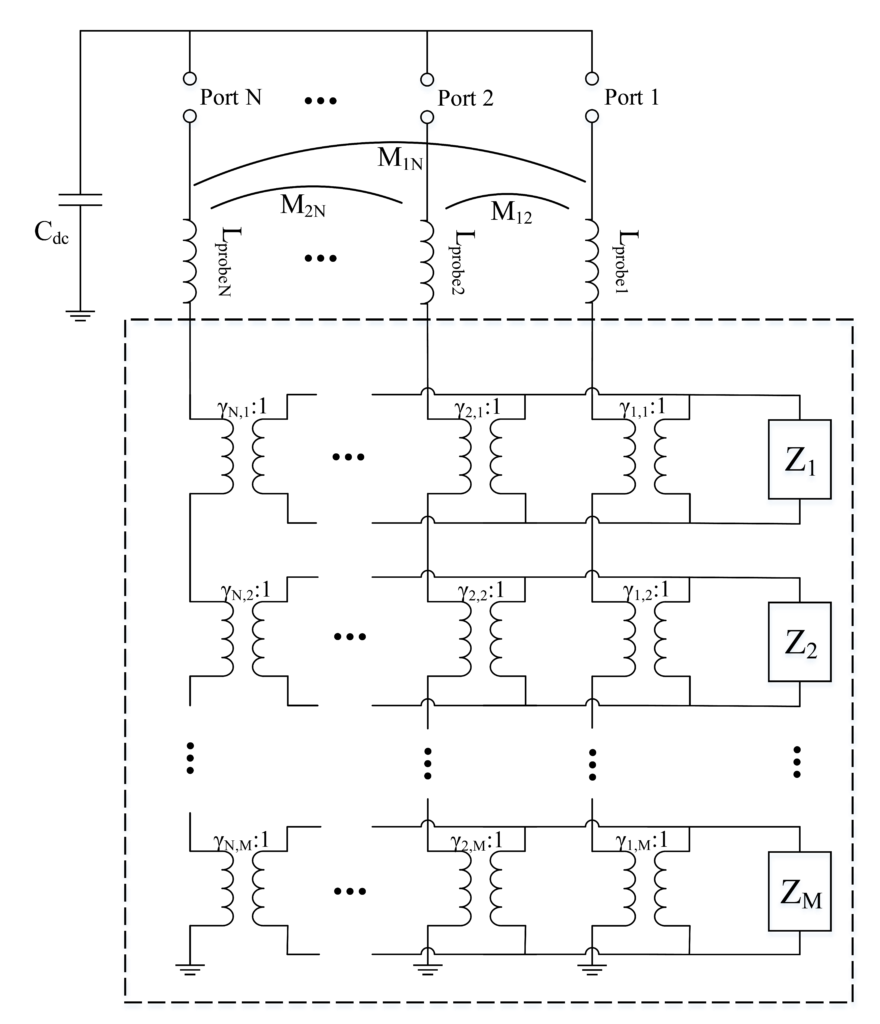
Sponsors




